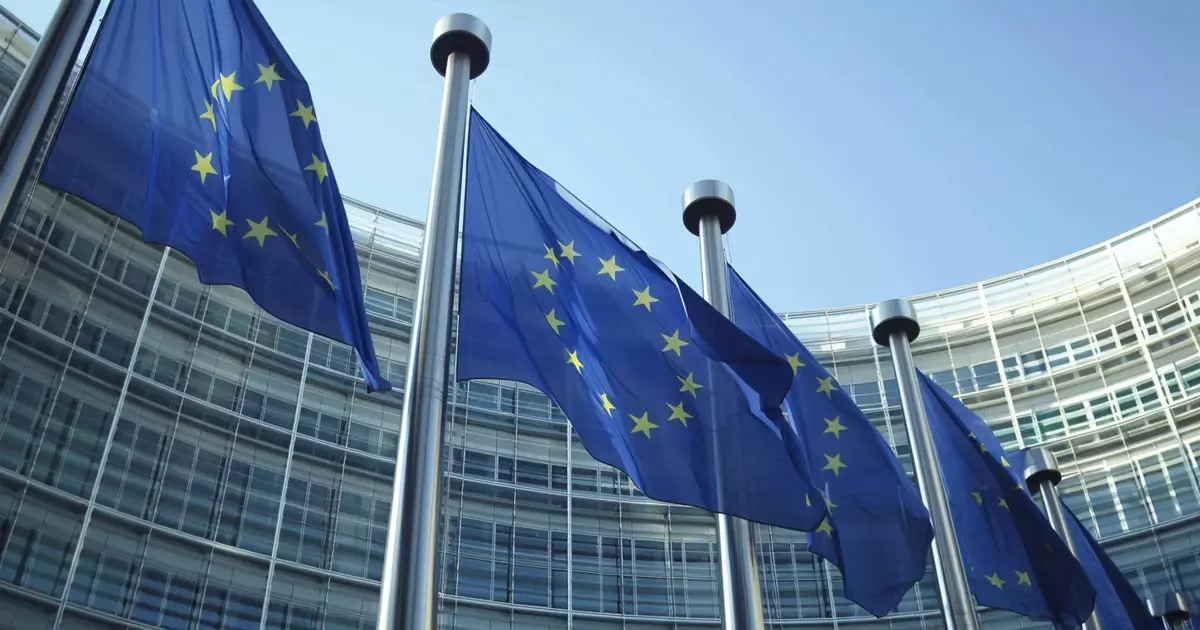The fast-evolving landscape of cryptocurrency has long struggled with the absence of a clear regulatory framework. As digital assets gained prominence, the lack of consistency in regulations across different jurisdictions raised concerns regarding investor protection, security, and market integrity. However, with the European Union’s introduction of the Markets in Crypto-Assets (MiCA) regulation in 2020, a transformative change is on the horizon for the European crypto ecosystem. This article delves into the implications of MiCA, its roots in previous regulatory frameworks, and its potential to redefine the future of cryptocurrencies in Europe.
Historically, Europe has been perceived by some as trailing its counterparts in the US and Asia concerning blockchain innovation. The launch of MiCA marks a pivotal shift in this narrative, positioning Europe as a leader in developing a structured regulatory approach towards cryptocurrency. It is a clear indication that the continent is not merely going to conform to existing global standards but is instead setting the groundwork for a more organized and secure crypto market.
MiCA aims to establish a comprehensive legal framework that addresses the complexities and risks associated with crypto-assets. The regulation seeks to create a conducive environment where businesses can innovate while adhering to critical consumer protection laws. It underscores the belief that regulatory clarity can lead to enhanced product quality and safety in the crypto space.
The Parallels with GDPR
In many ways, MiCA draws from the lessons learned during the implementation of the General Data Protection Regulation (GDPR) in 2016. The GDPR set rigorous standards for data privacy in response to the rapidly changing digital landscape, compelling businesses to adopt stringent privacy measures. Initially met with skepticism, GDPR eventually solidified as a global benchmark for data protection.
Similarly, MiCA is poised to become a cornerstone of crypto regulation, drawing a line that separates compliant entities from those that risk being left behind. Just as GDPR propelled data security to the forefront of corporate agendas worldwide, MiCA has the potential to turn compliance into an industry expectation within the crypto space. This regulation anticipates attracting a host of businesses across various sectors, as compliant stablecoins and cryptocurrencies can facilitate transactions with greater security and reliability across the EU market.
The road to compliance is fraught with challenges. Recently, notable exchanges, like Coinbase, announced moves to delist stablecoins not adhering to MiCA guidelines by the end of 2024, highlighting the significant impact of this regulation. Tether, a key player in the stablecoin arena, has signaled its intent to develop a “technology-based solution” to navigate these requirements, showcasing that the pressure for compliance can spur innovation in product development.
Such developments reflect a broader trend: under MiCA’s mandates, companies are being pushed to enhance transparency and operational resilience. The regulation compels stablecoin issuers to provide significant disclosures regarding their reserves, addressing long-standing concerns over trust and reliability. By mandating clarity in operations, MiCA is set to cultivate a more accountable and ethical atmosphere within the crypto sector.
Another noteworthy aspect of the MiCA is its emphasis on sustainability. Recognizing the environmental implications of crypto operations, MiCA requires companies to disclose their carbon footprint and advocate for eco-friendly practices. This initiative stands to benefit both investors and the planet, as it encourages responsible cryptocurrency practices while simultaneously enhancing the reputation of the industry.
As the demand for sustainable investment grows, crypto providers will increasingly need to align their operations with modern environmental considerations. The expectation set by MiCA will prompt shifts in how companies approach their development and operational strategies, fostering an ethos of sustainability within the crypto market.
A New Dawn for Cryptocurrency
The impending full rollout of MiCA by 2026 presents a unique opportunity for the European Union to redefine the global standards for crypto-asset regulation. A successful implementation of MiCA could inspire regulatory frameworks in other regions to adopt similar standards, promoting a harmonious global approach to cryptocurrency governance.
In this evolving environment, heightened regulatory scrutiny should not be seen as a deterrent but rather as a necessary catalyst for innovation and compliance. MiCA sets the stage for an invigorated market where traditional business models can coexist with new technologies, driving forward economic and technological advancements across Europe.
Ultimately, the MiCA regulation stands to be a game-changer not only for Europe’s cryptocurrency landscape but also for the industry’s global perception. By delivering clarity, fostering innovation, and emphasizing sustainability, MiCA has the potential to lead a progressive shift in the way cryptocurrencies are developed, regulated, and adopted worldwide. The road ahead is rife with opportunities, and those who adapt in compliance will undoubtedly thrive in this new era of crypto.



















Leave a Reply